Nothing and Everything
Russell Ferguson
MOAD Unbound, Issue Number 2, Spring 2024
Nothing and Everything
Russell Ferguson
The title of Jorge Pardo’s installation at the Museum of Art and Design in Miami, Mongrel plays on his own name. Pardo, a term historically used in the Spanish and Portuguese-speaking Americas designated those who were triracial, that is, descended from the indigenous people, Europeans, and Africans. In the colonial period and afterwards, such categories were rigorously pursued, and, even today, we live with the traces of this obsession with race and so-called racial purity that they represent.[1]
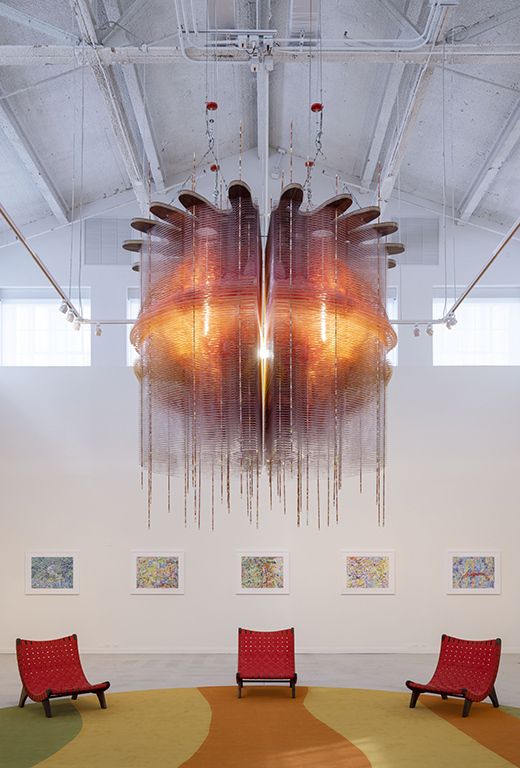
If the name of the exhibition thus suggests a particular history prevalent throughout the colonized Americas, the installation also draws on the more recent and specific history of the artist’s family, a history that overlaps with that of many thousands of other families who left Cuba after the revolution there and came to the United States, and who were processed by the American authorities in the building known as the Freedom Tower, which now houses the museum. For many Cuban emigrants to the United States, the Freedom Tower has something of the role that the Statue of Liberty and Ellis Island had for earlier generations of immigrants. Pardo himself passed through the building in 1969, when he was six years old.
Like most others who were there, he and his family had left Cuba with very little. Pardo remembers being given food and being questioned by American officials worried that there might be Communist spies among the refugees. Pardo’s family had not initially been hostile to the new regime in Cuba, and, indeed, his mother, an accountant, had been quite sympathetic, but, like many others, they had grown disillusioned and frustrated by shortages of everyday products. They had waited more than two years to leave, a period during which his father, who had worked restocking the shelves at the Woolworth’s store in Havana, was sent to a camp to harvest rice and tomatoes.
After emigration, the family did not remain in South Florida. They moved to Chicago, where Pardo’s parents found work in factories. They still lived around five or six other Cuban families there but living in a relatively small Cuban community in Chicago was obviously different than the experience of those who found a home in the Little Havana of Miami or in other Cuban enclaves in Florida. Pardo grew up both Cuban and Midwestern, or, as he puts it, “American around Cubans” rather than entirely Cuban.[2]
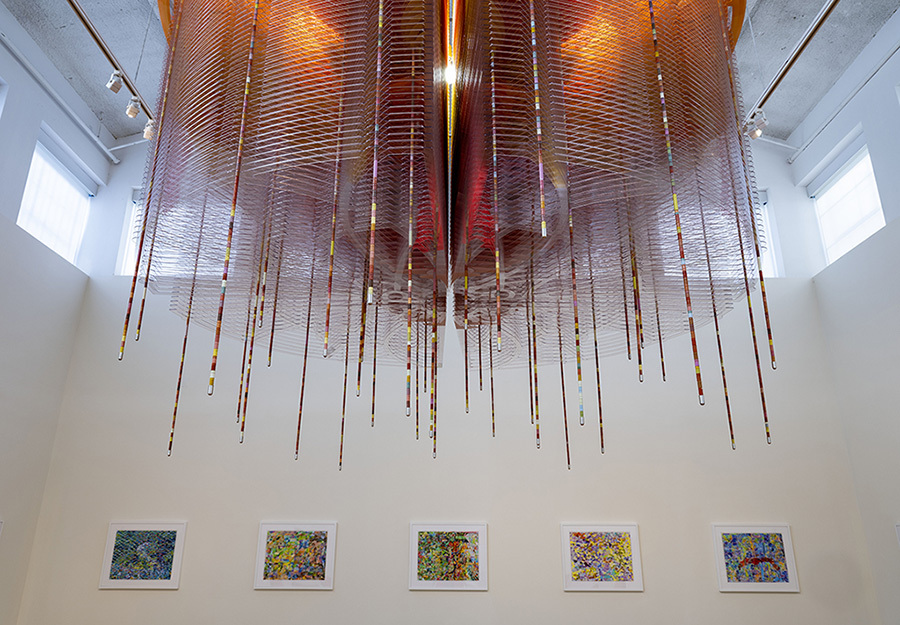
This brief account of Pardo’s personal experience of immigration and passage through the Freedom Tower might suggest that his installation would be a personal story of the kind common in much art today, a telling of his own experiences as the positive assertion of a marginalized history excluded from dominant narratives. The reality, however, is different. The self-deprecating use of the word “mongrel” in the installation’s title might be the first indication that this work is not going to be uplifting or inspirational in any conventional way. “That’s the most conservative way to access a work of art,” he has said. “It's like saying ‘I’m interested in this picture, but I will only go on looking at it if the artist is a good person, and if, you know, politically, historically, and so on, they toe the line.’ The aesthetic culture that I see myself involved in is very much amoral.”[3] Pardo here is far from the contemporary art-world rhetoric that revolves around questions of cultural identity, and is—unfashionably—much closer to the late-nineteenth-century aestheticism of art for art’s sake, most famously expressed, perhaps, by Oscar Wilde’s assertion in the preface to The Picture of Dorian Gray (1891) that “There is no such thing as a moral or an immoral book. Books are well written, or badly written. That is all.”[4]
Pardo is fundamentally uninterested in providing a didactic experience or any moral lesson for the viewers of his work. He has, it is true, always incorporated specific elements of his own life and experience into his art. “I have an interest in making art that deeply reflects my life or ordinary things,” he has said. But he has also been clear that this focus is a vehicle for open-ended consideration by the viewer, rather than primarily an element in his own autobiography:
"If you’re really going to look at something you’re going to unravel a bunch of different positions, different contradictions. It’s about how to make a machine that can present these things, that can give information and at the same time make it clear that this is really more a set of contingencies than an answer to something."[5]
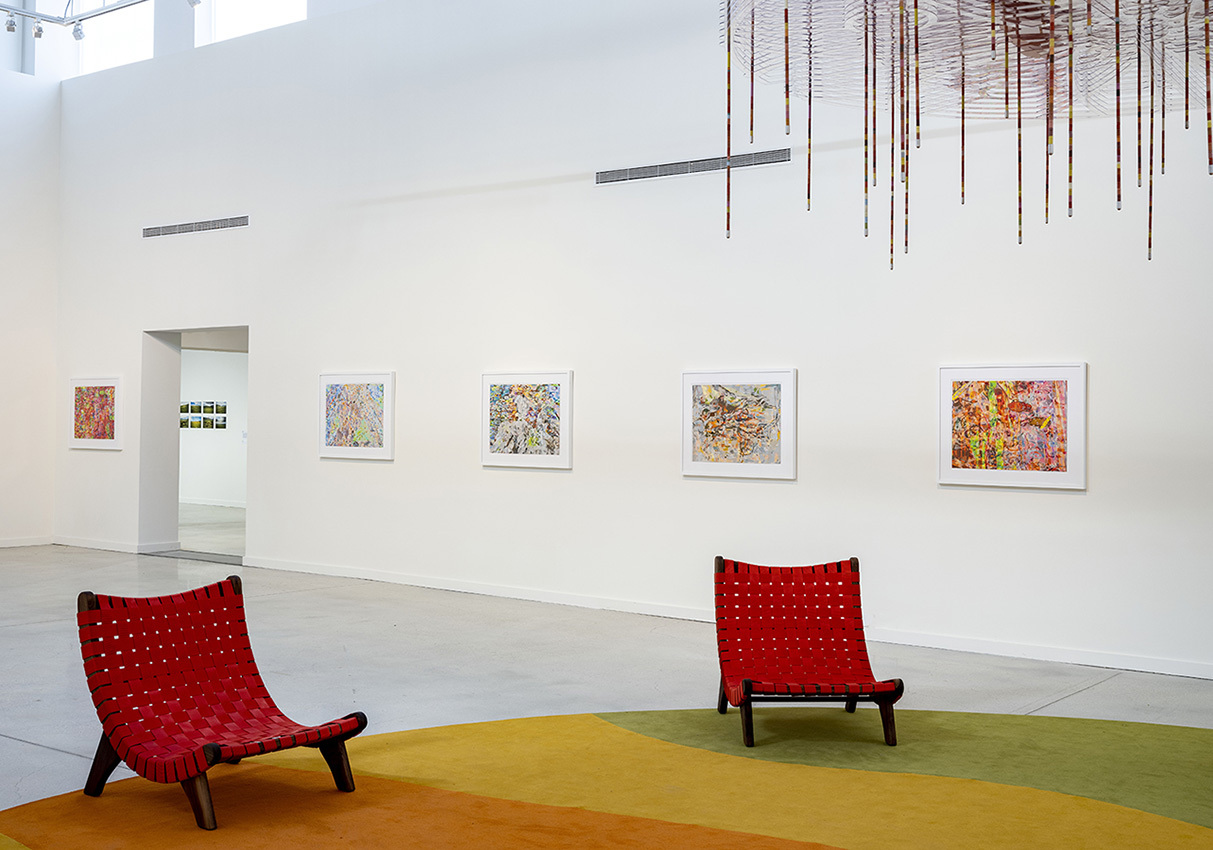
The personal references in his work, then, are both explicit and highly specific, yet, at the same time, resistant to offering the viewer an easily graspable handle to use as a point of access into any supposed narrative that drives it. This is evident even in his earliest work. Think, for example, of My Small Kitchen, 600 Square Feet, $600 a Month, My Friend Harry Reils, Silverlake, I Wish I Would Have Done It This Way the First Time, What a Beautiful Fucking View (1992), which resembles—or is—an MDF-and-Formica kitchen unit with a counter, cupboards, and drawers. As viewers, we are inclined to believe in the truth of the rambling and almost incoherent title (its artlessness is part of what makes it believable), but all that information gives us very little in the end. We don’t know who Harry Reils is, or what his relationship to the apartment was.[6] The autobiographical data is like a Hitchcockian MacGuffin that moves the plot forward while at the same time being almost irrelevant to it. The specific invocation of the artist’s friend, in fact, obscures and delays for a moment or two the more challenging question of how we are supposed to come to terms with this kitchen unit as a work of sculpture, and the way in which Pardo makes use of this object to challenge and play with the viewer’s expectations, and with the categories of artistic form.
The pattern continues in works named after his art dealers (Tim, Friedrich, 2001), daughter (Penelope, 2004), and his cat (Oliver, Oliver, Oliver, 2004), to pick only a few examples. For a viewer, does it make a difference to know that the Tim here is Tim Neuger, owner of a German gallery? Does it seem like piece of insider-ish art world information? What relationship does a title like that have to the one referencing his cat? The natural impulse is to seek to read the work through the information announced in their titles, but that is a dead end. Yes, the names are real—they refer to real people (or animals)—but no, that information is not going to unlock some secret meaning that would otherwise remain concealed. As Pardo has put it in direct terms, “I think it’s important that the viewer never return to the artist for what is actually significant in the work. I mean, that’s not a very productive way to read anything.”[7]
Let’s instead return to his characterization of his work as a “set of contingencies.” If we think about his work in this way, it becomes clear that while it is full of specific information, references to real-world people and things, and also full of real decisions, about, for example, color, place, and context, nearly all of these things could have been different. Pardo makes his choices, but they exist in relationship to the viewer as decisions that are both final and, at the same time, potentially arbitrary. As he puts it, “I believe in nothing and I believe in everything at the same time.”[8] The position left for the viewer, then, is not to conduct some kind of forensic analysis of the information included in the work, but rather to engage with it from a hypothetical position of equality, allowing the choices made by the artist to spark a variety of responses, each of which will represent its own set of contingencies, which may or may not parallel those initially proposed by the work itself. Pardo folds details of his personal life into the work but expects that the viewers will respond to this information by projecting elements of their own experience back onto it, so that an element of reciprocity becomes integral to the relationship.
It should not come as surprise that Pardo has a level of disdain for the neutralizing white of the standard exhibition space for contemporary art. The white walls that provide the context for most work represent an assertion of the space’s claim to non-presence that in turn implies that the work which they contain stands alone, autonomously, and is to be received exclusively on its own terms. The space aspires to invisibility, and this assumption is so prevalent that it itself still largely passes without comment or challenge. The invisibility is invisible.
All of Pardo’s work stands against this position: “the idea of a controlled area—you know, like a scientific space of speculation, the white cube or whatever you want to call it—that’s even more uninteresting.”[9] He has consistently tried to break free of the supposed clean slate of such spaces in favor of sites that are conventionally considered peripheral. In 2000 at the Dia Center for the Arts in New York, he chose to occupy the bookstore and lobby rather than one of the sought-after gallery spaces. His work has manifested itself in the form of many cafes and bars, and even a pier with a cigarette vending machine (Pier in Münster, Germany, in 1997). This aspect of Pardo’s work puts it in a long tradition of art that refuses the distinction between so-called everyday life and a supposedly autonomous sphere of art entirely separate from quotidian concerns. Piet Mondrian, for one, wanted to create “a room in which painting and sculpture will be realized by the interior itself,” and his ideal museum gallery was “a bar with an American jazz band.”[10]
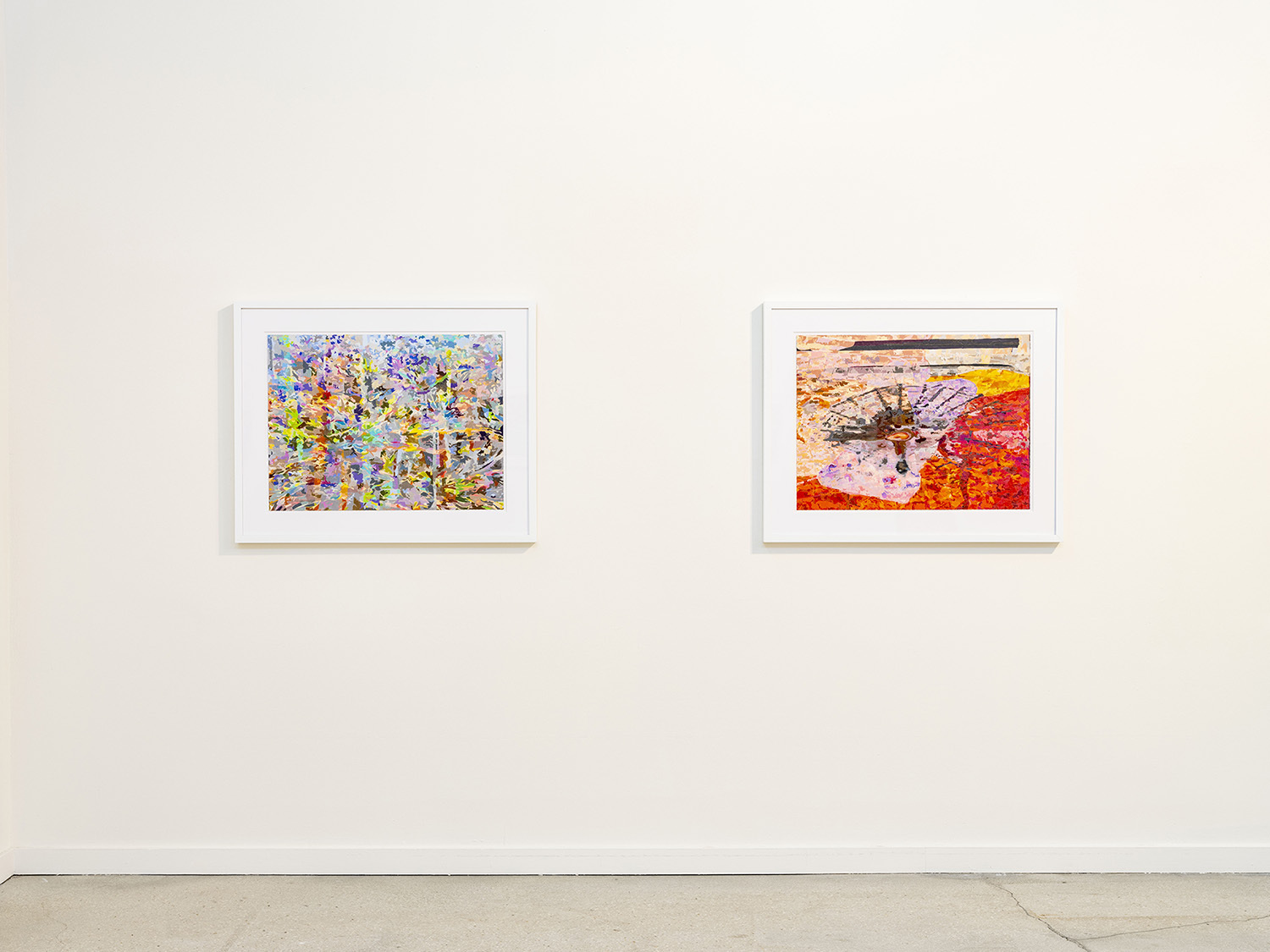
The Freedom Tower comes with a whole set of associations unrelated to the exhibition of art. That suits Pardo, but more because those associations open up the field of reception for his work than because of the (nonetheless real) personal connections that are also in play for him.
The twenty-five large drawings featured in the Miami exhibition began with a series of images layered over each other, a process that Pardo conducts on his computer. He then renders the results on paper with his team of assistants at his studio in Mérida, Mexico. This collaborative process, in which the individuals in the group working on the drawings have a certain latitude on color choice, for example, allows the artist to explore the back-and-forth between digital and analogue means of production, a dialogue that reflects his wider interest in blurring and confusing the lines between disciplines and techniques.
In this case, while most of the images include imagery from the archives of the Freedom Tower, some do not. This is, in part a reflection of the fact that the Cuban authorities often confiscated the family photographs of those leaving, with the promise of returning them later, only to sometimes send those of a different family instead. In this sense, the multi-layered images match the history of loss and confusion of the historical experience, but do not attempt to recreate a unified and coherent narrative of that experience. They address the history of the space, but only indirectly. They take form instead as a seductively lush, quasi-abstract palimpsest of memory and gesture. The rest is up to us.
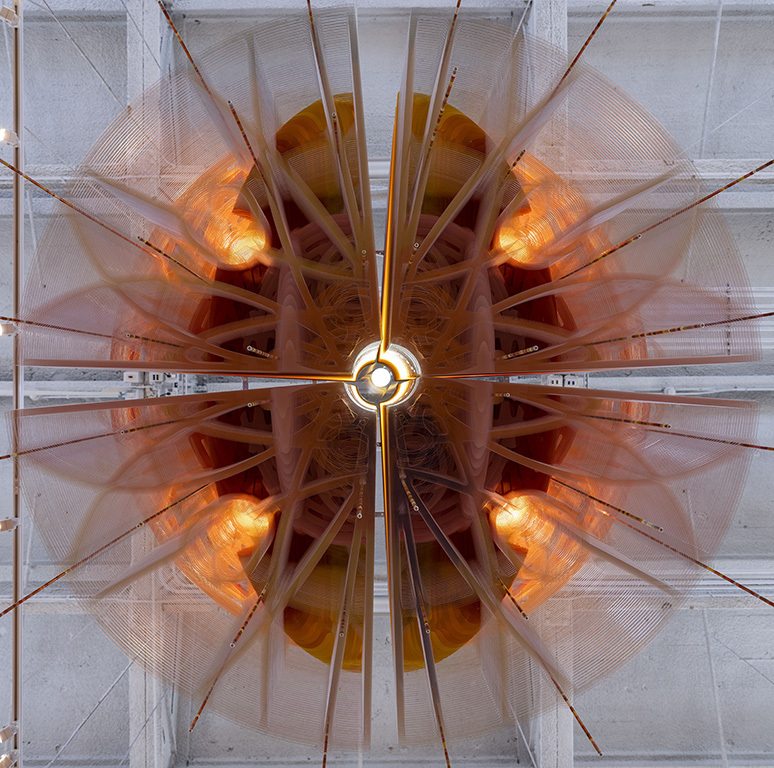
[1] See, for example, Ilona Katzew, Casta Painting: Images of Race in Eighteenth-Century Mexico (New Haven and London: Yale University Press, 2004).
[2] Jorge Pardo, in conversation with the author, October 11, 2021.
[3] Pardo, in Jorge Pardo and Jan Tumlir: Conversations, (Los Angeles: Inventory Press, and Berlin: neugerriemschneider, 2021), 61.
[4] Oscar Wilde, The Picture of Dorian Gray (New York: Dell, 1963), 5.
[5] Pardo, interview with Lane Relyea, in Christina Vegh, Lane Relya, and Chris Kraus, Jorge Pardo (London: Phaidon, 2008), 29.
[6] He was a regular visitor.
[7] Pardo in Jorge Pardo and Jan Tumlir: Conversations, 42.
[8] Pardo, in conversation with the author, October 15, 2021.
[9] Pardo, in Jorge Pardo and Jan Tumlir: Conversations, 18.
[10] Piet Mondrian, “An International Museum of Contemporary Art” (1931), in The New Art—The New Life: The Collected Writings of Piet Mondrian, ed. and trans. Harry Holtzman and Martin S. James (Boston: G.K. Hall & Co., 1986), 243.
